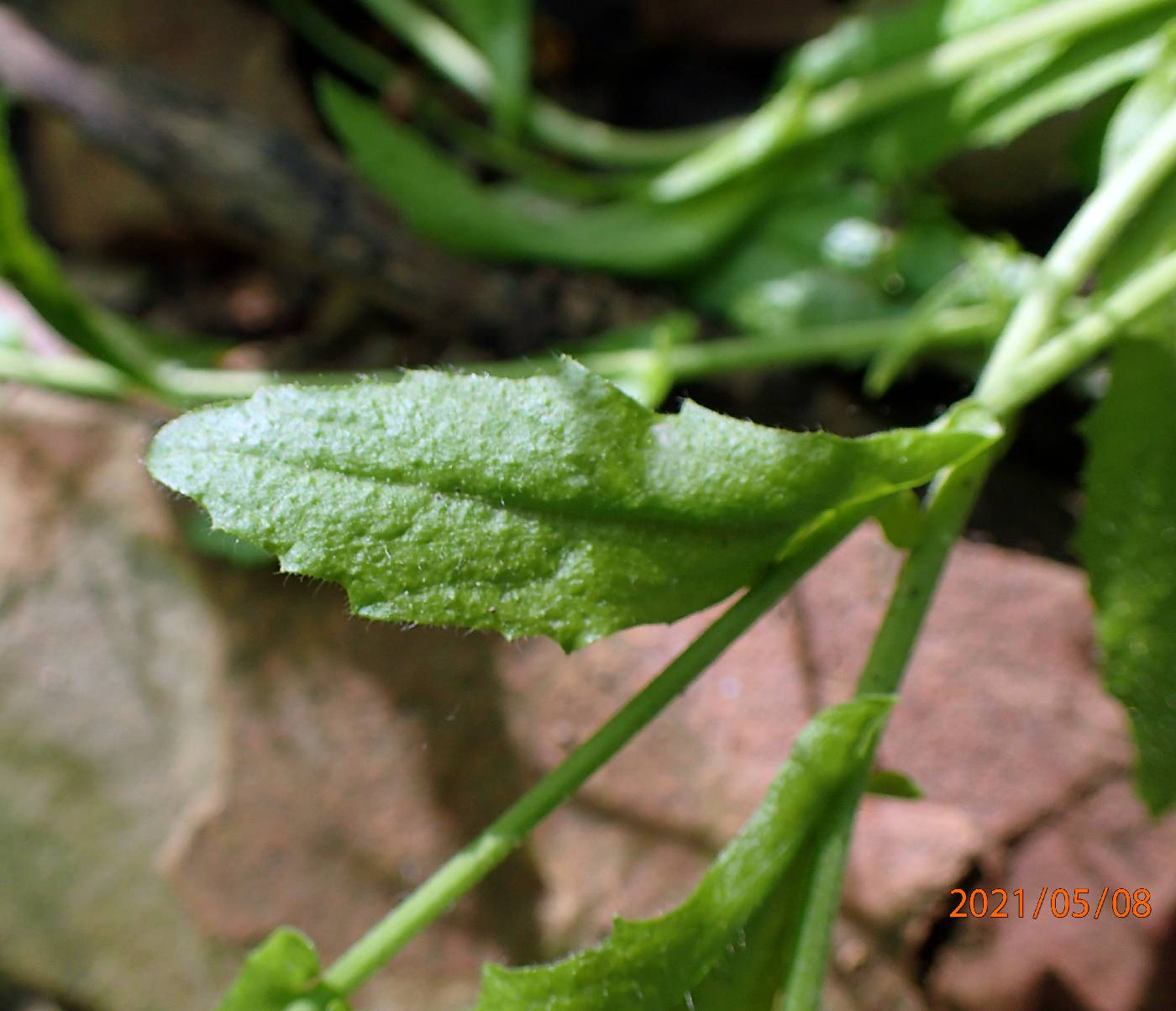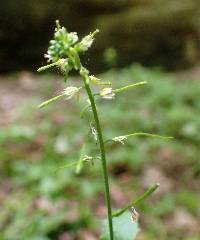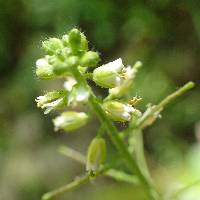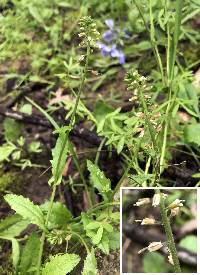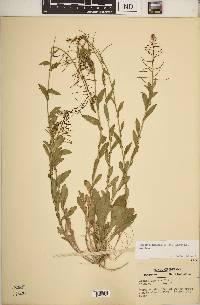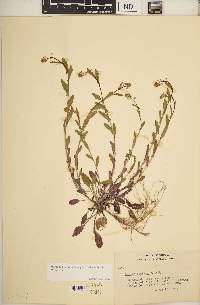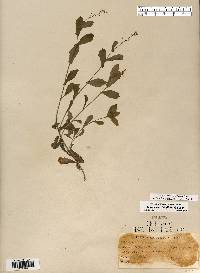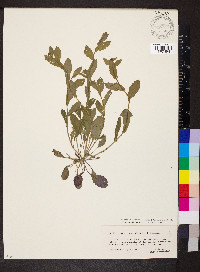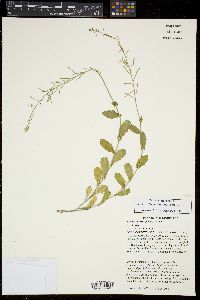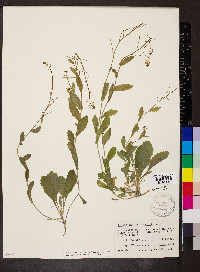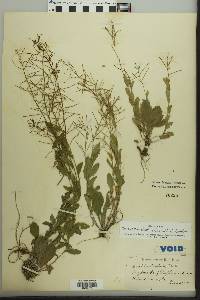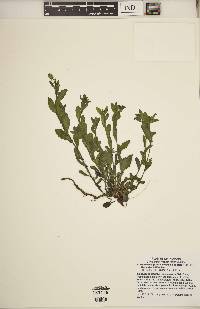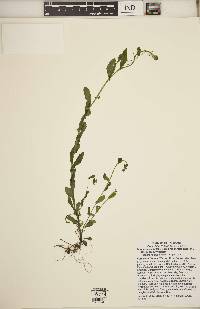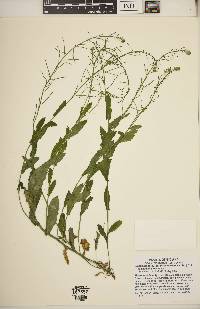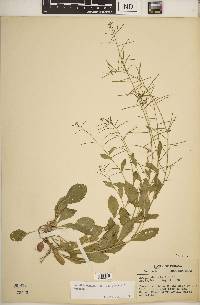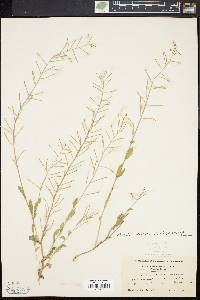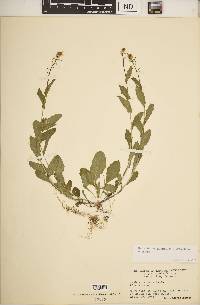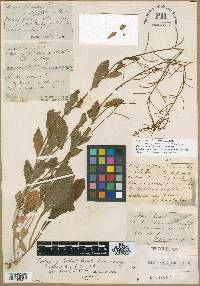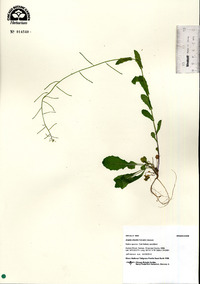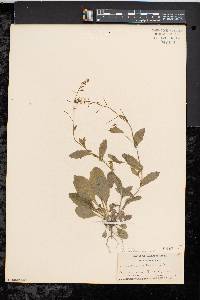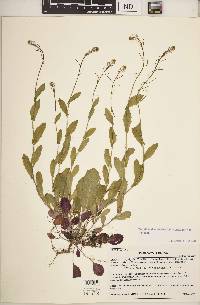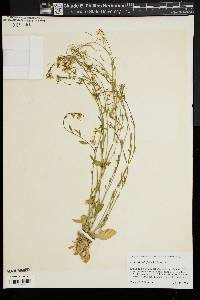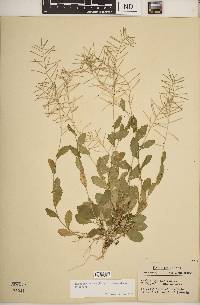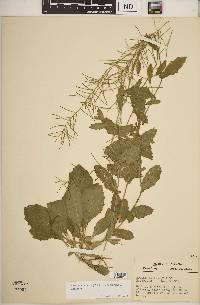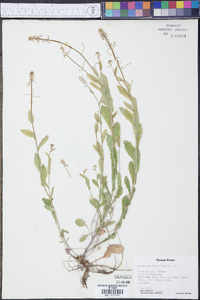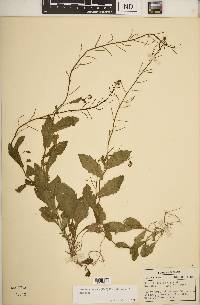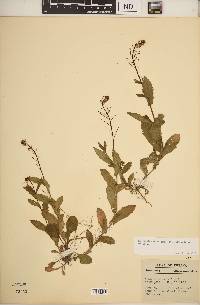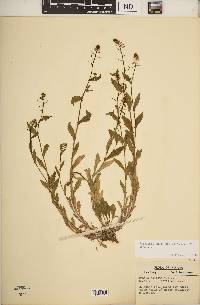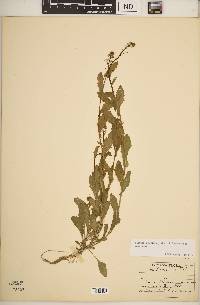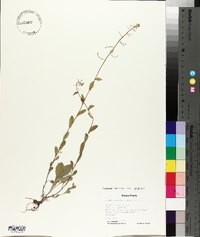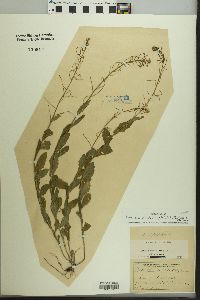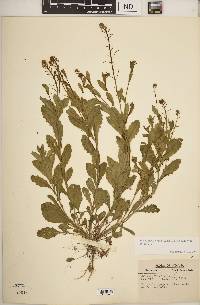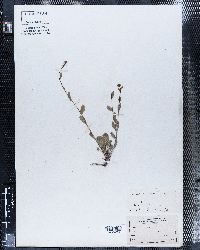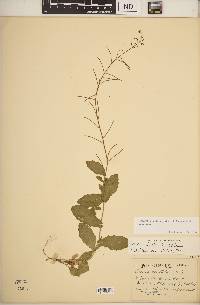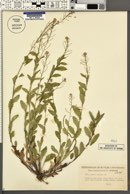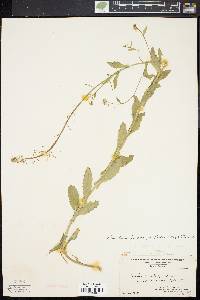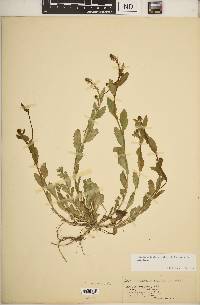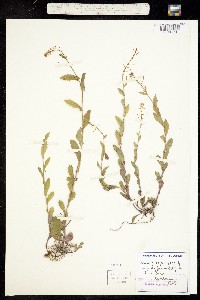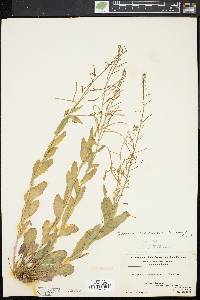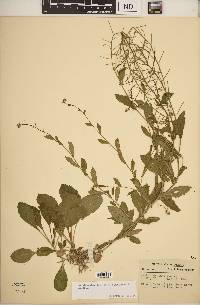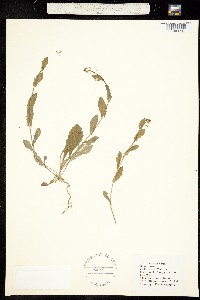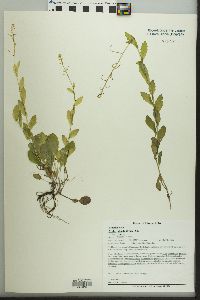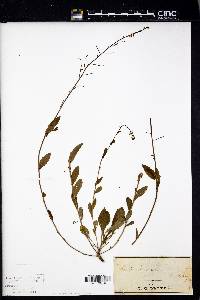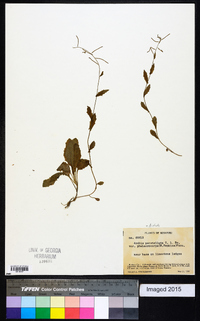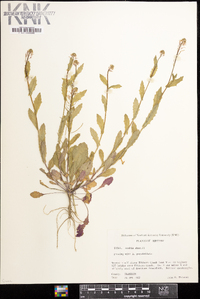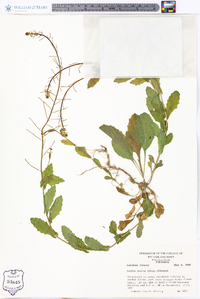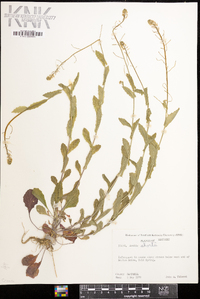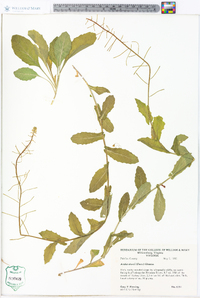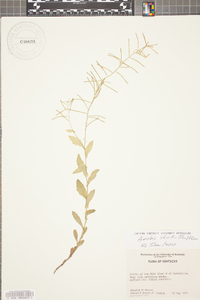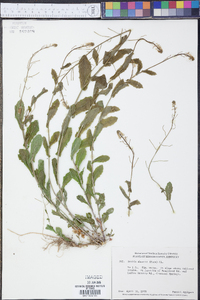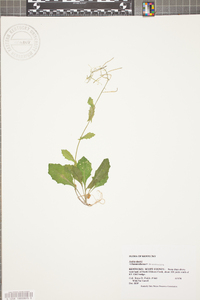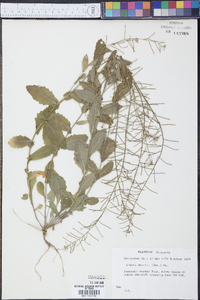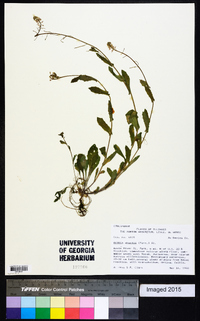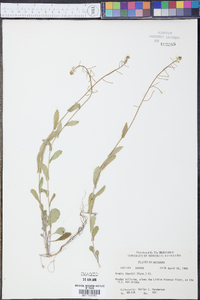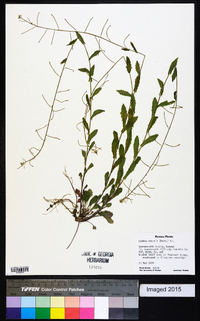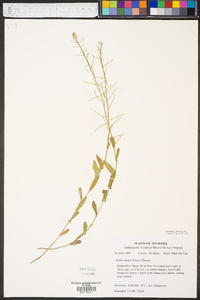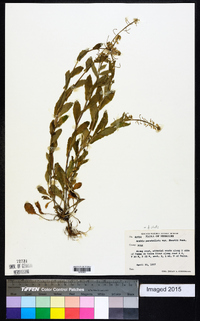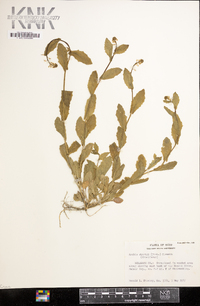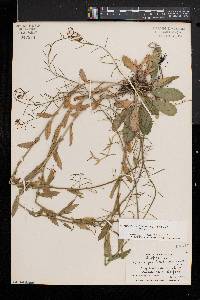Borodinia dentata
|
|
|
|
Family: Brassicaceae
Short's False Rockcress, more...Short's rockcress
[Arabis dentata (Torr.) Torr. & A. Gray, moreArabis dentata var. phalacrocarpa M. Hopkins, Arabis perstellata var. phalacrocarpa (M. Hopkins) Fernald, Arabis perstellata var. shortii Fernald, Arabis shortii (Fernald) Gleason, Arabis shortii var. phalacrocarpa (M. Hopkins) Steyerm., Arabis shortii var. shortii , Boechera dentata (Raf.) Al-Shehbaz & Zarucchi, Boechera shortii] |
Biennials; short-lived; sexual; caudex present or absent. Stems usually 2-4 per plant or caudex branch, arising from margin of rosette near ground surface, or arising laterally proximal to sterile shoots, 2-6 dm, pubescent proximally, trichomes short-stalked, 2-4-rayed, 0.15-0.4 mm, sparsely pubescent or glabrous distally. Basal leaves: blade obovate to oblanceolate, (6-)10-45 mm wide, margins dentate, not ciliate, surfaces sparsely pubescent, abaxially trichomes short-stalked, 3- or 4-rayed, 0.15-0.4 mm, adaxially simple ones, 0.4-1 mm. Cauline leaves: 4-20, rarely concealing stem; blade auricles 1-8 mm, surfaces of distalmost leaves sparsely pubescent. Racemes 14-66-flowered, sparingly branched. Fruiting pedicels divaricate-ascending to slightly descending, straight, 1-6 mm, glabrous or pubescent, trichomes appressed, branched. Flowers divaricate at anthesis; sepals glabrous or sparsely pubescent; petals white or cream, 2-3.5 × 0.7-1 mm, glabrous; pollen ellipsoid. Fruits divaricate-ascending to slightly descending, not appressed to rachis, not secund, straight or slightly curved, edges parallel, 1.3-4.2 cm × 0.7-0.8 mm; valves usually sparsely pubescent throughout, rarely glabrous; ovules 14-44 per ovary; style 0.1-0.5 mm. Seeds uniseriate, 0.7-1.1 × 0.5-0.6 mm; not winged. Flowering Apr-Jun. Bluffs and rocky ledges, wooded slopes, floodplains; 100-300 m; Ont.; Ala., Ark., D.C., Ill., Ind., Iowa, Kans., Ky., Md., Mich., Minn., Mo., Nebr., N.Y., Ohio, Okla., Pa., S.Dak., Tenn., Va., W.Va., Wis. Sisymbrium dentatum Torrey is an illegitimate name that pertains to Iodanthus dentatus.
Biennial (sometimes perennial?) 2-5 dm, the stem branched at base, often decumbent, thinly pubescent with mostly forked hairs; cauline lvs oblanceolate to oblong- obovate, 2-5 cm, even the uppermost usually sharply toothed, somewhat narrowed to the clasping base, pubescent with simple hairs above, with stellate ones beneath; pet white, a little exceeding the sep; pedicels at anthesis hirsute, at maturity 2-4 mm and usually glabrous; fr widely spreading, flat, 1.5-3 cm נ1 mm, often minutely hairy, the valves nerveless or 1-nerved near the base; seeds in 1 row, wingless. Rich moist woods; N.Y. to Minn., s. to Va. and Ark. Apr., May. (A. dentata) Gleason, Henry A. & Cronquist, Arthur J. 1991. Manual of vascular plants of northeastern United States and adjacent Canada. lxxv + 910 pp. ©The New York Botanical Garden. All rights reserved. Used by permission. From Flora of Indiana (1940) by Charles C. Deam Infrequent to rare throughout the state or absent from some counties. Locally it may be rather frequent but I have never found it so. It is usually found in moist, sandy soil of wooded, alluvial bottoms, in the talus of cliffs, and rarely in dry soil on slopes. It is restricted almost entirely to the proximity of streams and is more frequent along our major streams. ...... Indiana Coefficient of Conservatism: C = 5 Wetland Indicator Status: FACU |

